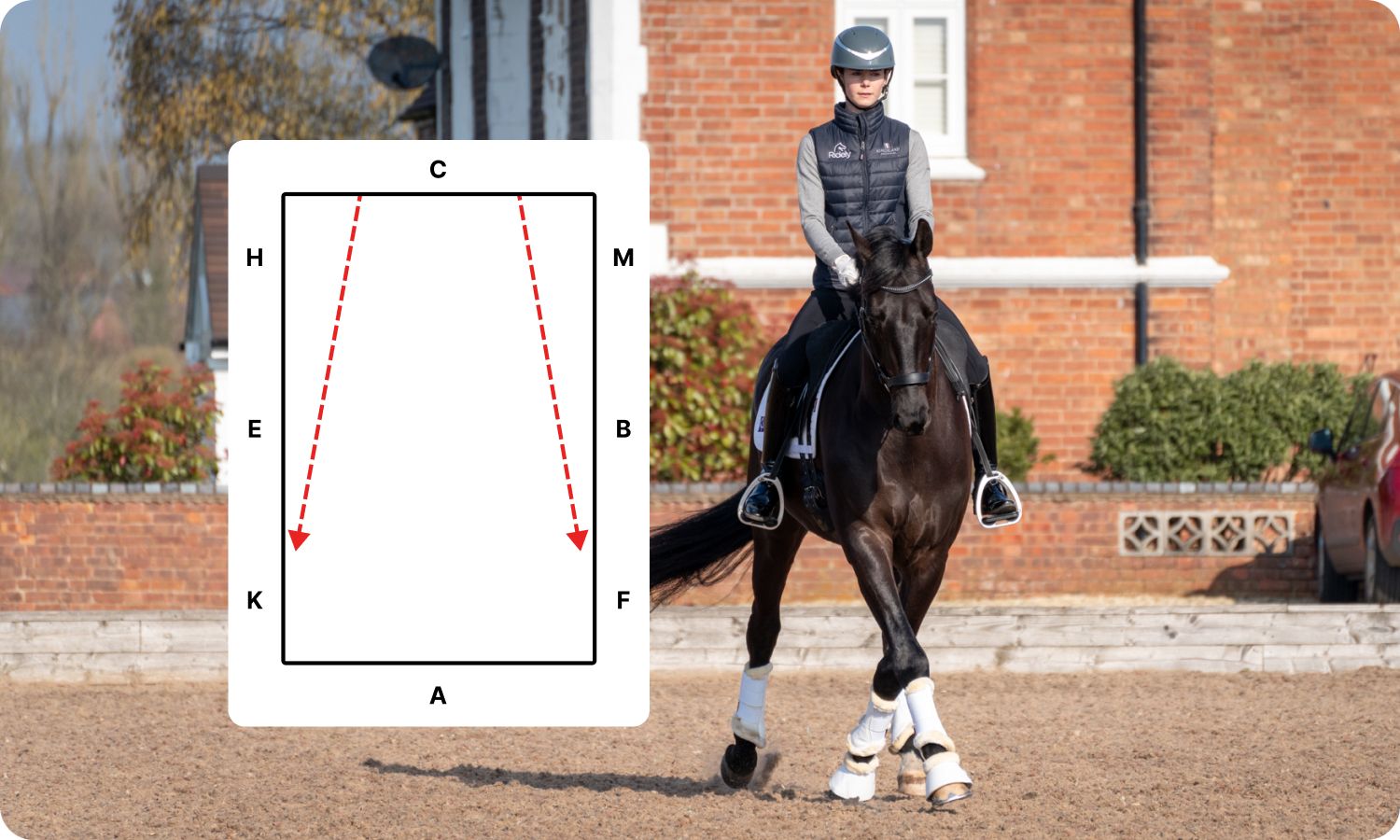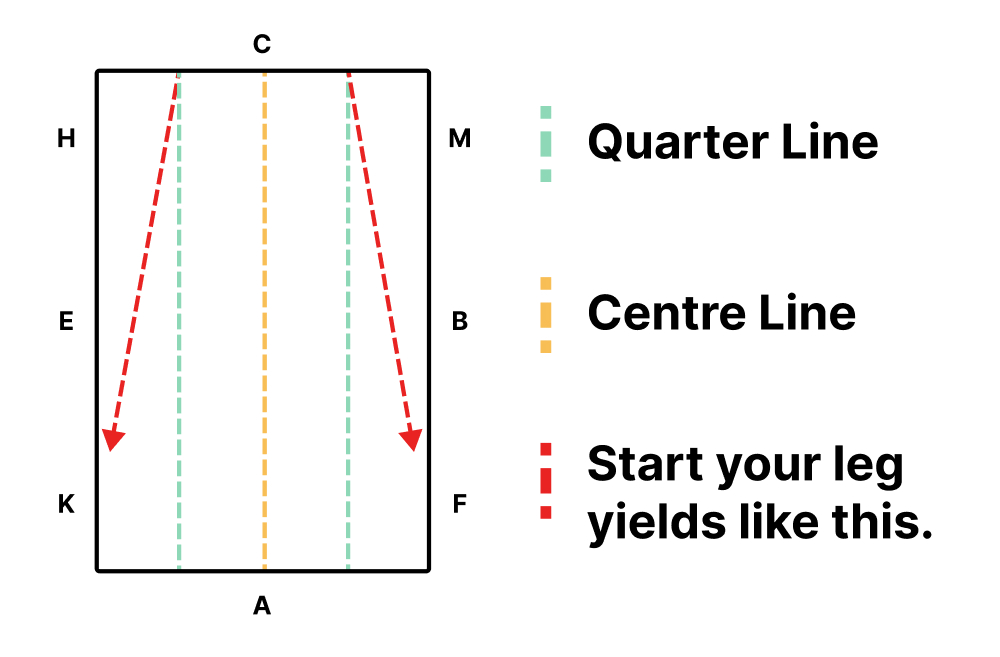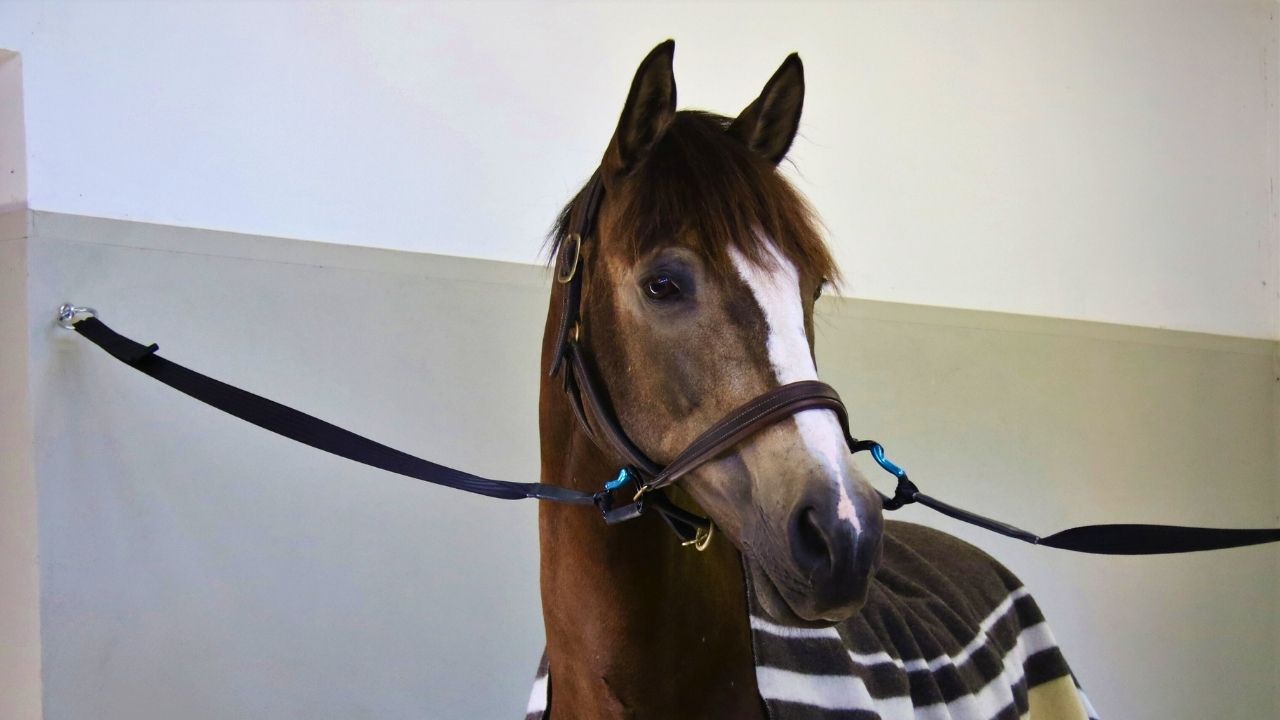What Is A Leg Yield? How To Ride A Correct Leg Yield

This article dives into the basics of the lateral movement, the leg yield. We will explore what a leg yield is, how to ride it and what benefits it will provide you and your horse in your training.
What is a Leg Yield?
A leg yield is a lateral movement that involves moving the horse sideways, on two tracks, while maintaining forward momentum. The horse remains straight during this movement, there should be a slight flexion at the poll, that is away from the direction the horse is travelling.
Example: If you are yielding to the right, the horse should be straight, moving to the right, sideways on two tracks, with slight flexion at the poll to the left.
The Basic Run Down of A Leg Yield
Leg yielding is one of those movements that has multiple benefits and purposes, not only because it is utilised in dressage tests, but also as a starting point for young horses to learn to move away from the leg aid, more advanced horses to balance, gain strength and engage their bodies but also to progress into more difficult movements such as half pass and flying changes.
Step-by-step guide on how to ride a leg yield:
Warm up
Start your ride with a slow, calm and consistent warm up. It is so important to warm your horse up before riding, this will help loosen their muscles and avoid a higher risk of injuries when riding.
Throughout your warm up, focus on the basics of transitions, circles and bending exercises to get your horse listening to you and moving in a supple manner.
Establish the correct position
Sit in an upright and balanced position, maintaining a soft and flowing contact with your horse’s mouth through the reins. Keep your leg position steady and use your seat and legs for communication.
Choose the direction and track
Decide which direction you want to ride the leg yield. It is always a good idea to start with the direction your horse finds easier, to ensure you have your communication cues clear and can reward the horse for their efforts.
Start on the quarter line of the arena, this will give you a clear goal to reach when pushing the horse across into the leg yield and to the wall of the arena. This exercise can start in the walk, and then progress into the trot once the horse has a clear understanding of your question. Ensure that your horse is moving forward with impulsion and do not ask for too much of an angle to start with, build up gradually as you both improve and gain strength.

Apply the aids
To initiate the leg yield, apply the leg you want the horse to move away from to encourage sideways movement. At the same time, maintain a light and even contact on both reins.
As your horse starts to move sideways, focus on maintaining the impulsion and energy from the original gait. Keep the inside leg active to maintain the bend through the horse’s body.
Pay attention to keeping your horse’s body straight, preventing any excessive shoulder or haunches leading. Use your seat and leg aids to keep the horse aligned. Avoid overbending or over flexing your horse’s neck.
When first starting to introduce the leg yield, it is okay to successfully ride one or two strides then riding straight to reward your horse. Over time, gradually increase the distance in which you ride the leg yield movement. The leg yield is a lateral movement that requires strength and suppleness from your horse.
After successfully riding the leg yield, reward your horse with a pat, a kind word, or a moment of relaxation. This helps to reinforce positive behaviour and encourages your horse’s willingness to perform the movement.
What benefits the leg yield provides
The leg yield is such a great exercise to promote suppleness and elasticity in the paces. In the early stages of training, the leg yield is a great way to teach the horse to move sideways away from the leg and create a good response to the aid. Leg yield can be ridden in all three paces (walk, trot and canter) and promotes freedom, elasticity, and regularity.
As the leg yield does not require collection – this ensures it is a great exercise for young horses coming back into work and also the warm up and performance of more advanced horses.
There are a variety of exercises you can train that include the leg yield and other lateral movements, here are some we recommend from Ridely:
- The Trot Leg Yield with Nicola Buchanan
- Improving Lateral Work with Carl Hester
- Serpentines with Cones & Lateral Work (Part 1, 2 and 3)
We always recommend working with guidance from a qualified instructor or trainer when learning new movements, especially if you’re new to riding lateral exercises like the leg yield. They can provide feedback and guidance to ensure you and your horse are performing the movement in a clear, correct and safe way.

- Train with 10+ Olympians from home.
- Learn and make the most of your equestrian life.

Learn from Carl Hester in Ridely!
Exclusive training videos with top trainers and riders like Carl Hester are available in the Ridely library. Don’t miss out!


